Shot Heard around the World many missed in 2022! Fusion Breakthrough at Lawrence Livermore National Laboratory. Endless Energy capabilities for Electric Vehicles that is Carbon Free? Whose control would this threaten? Breakthrough in Cancer therapy?
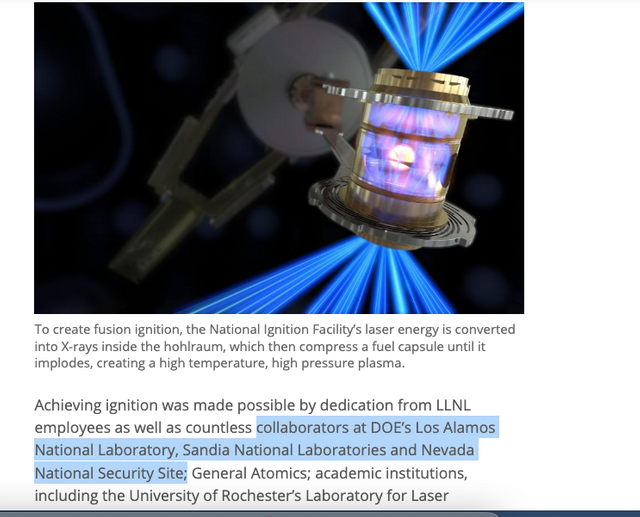
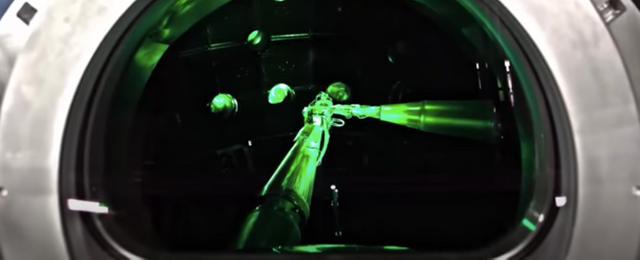
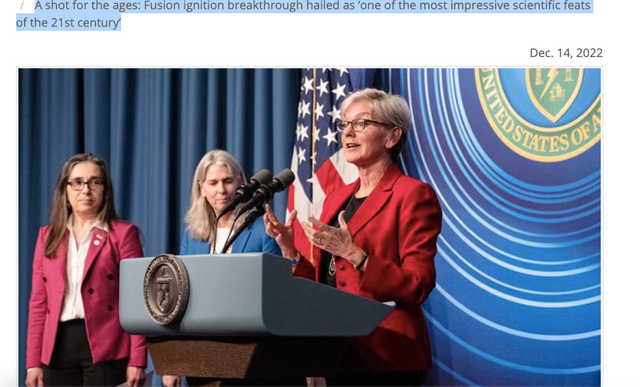
A shot for the ages: Fusion ignition breakthrough hailed as ‘one of the most impressive scientific feats of the 21st century’
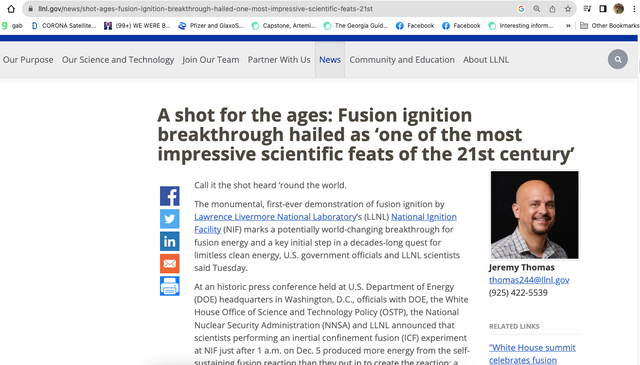
“Last week, at the Lawrence Livermore National Laboratory in California, scientists at the National Ignition Facility achieved fusion ignition — creating more energy from fusion reactions than the energy used to start the process,” said DOE Secretary Jennifer M.
Granholm. “It's the first time it has ever been done in a laboratory anywhere in the world — simply put, this is one of the most impressive scientific feats of the 21st century.”
Granholm added that the unprecedented accomplishment will strengthen national security and moves the world closer to the possibility of an abundant, carbon-free energy source for the future.
What happened when the nearest star to earth was in California in December 2022?
To make the numbers clear that is 12.2022 or 12222
At Lawerence Livermore in a lab for the first time the world's largest lasers forced atoms of hydrogen to fuse together in the same kind of energy producing action that fires the sun.
It lasted less than a billionth of a second, but after 6 decades of try and fail, the Lawrence Livermore National Laboratory proved it could be done.
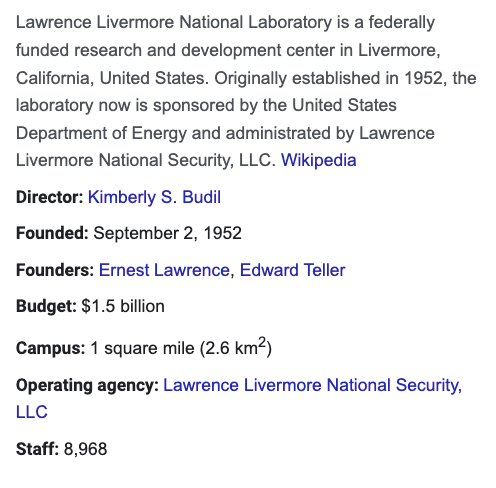
Fusion is the process by which two light nuclei combine to form a single heavier nucleus, releasing a large amount of energy. In the 1960s, a group of pioneering scientists at LLNL hypothesized that lasers could be used to induce fusion in a laboratory setting. Led by physicist John Nuckolls, who later served as LLNL director from 1988 to 1994, this revolutionary idea became inertial confinement fusion, kicking off more than 60 years of research and development in lasers, optics, diagnostics, target fabrication, computer modeling and simulation and experimental design.
To pursue this concept, LLNL built a series of increasingly powerful laser systems, leading to the creation of NIF, the world’s largest and most energetic laser system.
The lab was originally established as the University of California Radiation Laboratory, Livermore Branch in 1952 in response to the detonation of the Soviet Union's first atomic bomb during the Cold War. It later became autonomous in 1971 and was designated a national laboratory in 1981.
LLNL was established in 1952, as the University of California Radiation Laboratory, Livermore Branch, an offshoot of the existing University of California Radiation Laboratory at Berkeley.
The lab at Livermore was intended to spur innovation and provide competition to the nuclear weapon design laboratory at Los Alamos in New Mexico, home of the Manhattan Project that developed the first atomic weapons.
Lawrence tapped his former graduate student Herbert York, age 32, to run Livermore. Under York, the Lab had four main programs: Project Sherwood (the magnetic-fusion program), Project Whitney (the weapons-design program), diagnostic weapon experiments (both for the Los Alamos and Livermore laboratories), and a basic physics program. York and the new lab embraced the Lawrence "big science" approach, tackling challenging projects with physicists, chemists, engineers, and computational scientists working together in multidisciplinary teams.
Historically, the Berkeley and Livermore laboratories have had very close relationships on research projects, business operations, and staff. The Livermore Lab was established initially as a branch of the Berkeley laboratory. The Livermore lab was not officially severed administratively from the Berkeley lab until 1971. To this day, in official planning documents and records, Lawrence Berkeley National Laboratory is designated as Site 100, Lawrence Livermore National Lab as Site 200, and LLNL's remote test location as Site 300.
In 1957, the Livermore Lab was selected to develop the warhead for the Navy's Polaris missile. This warhead required numerous innovations to fit a nuclear warhead into the relatively small confines of the missile nosecone.
During the Cold War, many Livermore-designed warheads entered service. These were used in missiles ranging in size from the Lance surface-to-surface tactical missile to the megaton-class Spartan antiballistic missile.
LLNL conducts research into the properties and behavior of plutonium to learn how plutonium performs as it ages and how it behaves under high pressure (e.g., with the impact of high explosives). Plutonium has seven temperature-dependent solid allotropes. Each possesses a different density and crystal structure. Alloys of plutonium are even more complex; multiple phases can be present in a sample at any given time. Experiments are being conducted at LLNL and elsewhere to measure the structural, electrical and chemical properties of plutonium and its alloys and to determine how these materials change over time. Such measurements will enable scientists to better model and predict plutonium's long-term behavior in the aging stockpile.
Remember~ Allotropy or allotropism (from Ancient Greek ἄλλος (allos) 'other', and τρόπος (tropos) 'manner, form') is the property of some chemical elements to exist in two or more different forms, in the same physical state, known as allotropes of the elements. Allotropes are different structural modifications of an element: the atoms of the element are bonded together in different manners.
For example, the allotropes of carbon include diamond (the carbon atoms are bonded together to form a cubic lattice of tetrahedra), graphite (the carbon atoms are bonded together in sheets of a hexagonal lattice), graphene (single sheets of graphite), and fullerenes (the carbon atoms are bonded together in spherical, tubular, or ellipsoidal formations).
Allotropes are different structural forms of the same element and can exhibit quite different physical properties and chemical behaviours. The change between allotropic forms is triggered by the same forces that affect other structures, i.e., pressure, light, and temperature. Therefore, the stability of the particular allotropes depends on particular conditions. For instance, iron changes from a body-centered cubic structure (ferrite) to a face-centered cubic structure (austenite) above 906 °C, and tin undergoes a modification known as tin pest from a metallic form to a semiconductor form below 13.2 °C (55.8 °F). As an example of allotropes having different chemical behaviour, ozone (O3) is a much stronger oxidizing agent than dioxygen (O2).
Lawrence Livermore National Laboratory has worked out several energy technologies in the field of coal gasification, shale oil extraction, geothermal energy, advanced battery research, solar energy, and fusion energy. Main oil shale processing technologies worked out by the Lawrence Livermore National Laboratory are LLNL HRS (hot-recycled-solid), LLNL RISE (in situ extraction technology) and LLNL radiofrequency technologies.
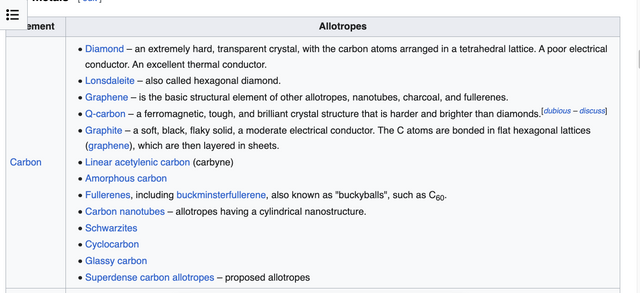
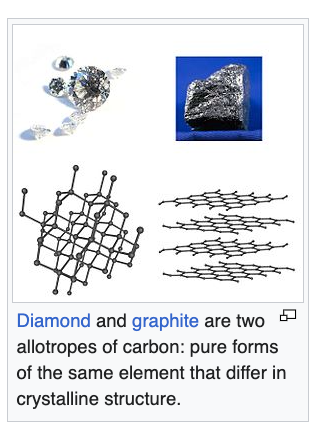
In December, 2022 scientists at Lawrence Livermore National Laboratory announced, in a breakthrough for fusion power technology, that they have used the technique of inertial confinement fusion to achieve a net gain of energy.
The National Ignition Facility (NIF) became the first fusion reactor to achieve breakeven on December 5, 2022, with an experiment producing 3.15 megajoules of energy from a 2.05 megajoule input of laser light for an energy gain of about 1.5.
Throughout its history, LLNL has been a leader in computers and scientific computing. Even before the Livermore Lab opened its doors, E.O. Lawrence and Edward Teller recognized the importance of computing and the potential of computational simulation. Their purchase of one of the first UNIVAC computers set the precedent for LLNL's history of acquiring and exploiting the fastest and most capable supercomputers in the world. A succession of increasingly powerful and fast computers have been used at the Lab over the years. LLNL researchers use supercomputers to answer questions about subjects such as materials science simulations, global warming, and reactions to natural disasters.
LLNL has a long history of developing computing software and systems. Initially, there was no commercially available software, and computer manufacturers considered it the customer's responsibility to develop their own. Users of the early computers had to write not only the codes to solve their technical problems, but also the routines to run the machines themselves. Today, LLNL computer scientists focus on creating the highly complex physics models, visualization codes, and other unique applications tailored to specific research requirements. A great deal of software also has been written by LLNL personnel to optimize the operation and management of the computer systems, including operating systems such as TOSS, operating system extensions such as CHAOS (Linux Clustering), and resource management packages such as SLURM.
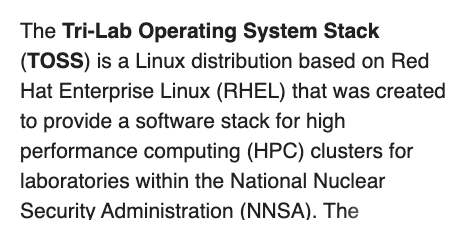

LLNL also initiated and continues leading the development of ZFS on Linux, the official port of ZFS to the Linux operating system.
In August 2009, a joint venture was announced between Sandia National Laboratories/California campus and LLNL to create an open, unclassified research and development space called the Livermore Valley Open Campus (LVOC). The motivation for the LVOC stems from current and future national security challenges that require increased coupling to the private sector to understand threats and deploy solutions in areas such as high performance computing, energy and environmental security, cyber security, economic security, and non-proliferation.
The LVOC is modeled after research and development campuses found at major industrial research parks and other U.S. Department of Energy laboratories with campus-like security, a set of business and operating rules devised to enhance and accelerate international scientific collaboration and partnerships with U.S. government agencies, industry and academia. Ultimately, the LVOC will consist of an approximately 110-acre parcel along the eastern edge of the Livermore Laboratory and Sandia sites, and will house additional conference space, collaboration facilities and a visitor's center to support educational and research activities.

it has a second principal facility next to Lawrence Livermore National Laboratory in Livermore, California and a test facility in Waimea, Kauai, Hawaii.
Sandia is owned by the U.S. federal government but privately managed and operated by National Technology and Engineering Solutions of Sandia, a wholly owned subsidiary of Honeywell International.
Sandia hosts a wide variety of research initiatives, including computational biology, physics, materials science, alternative energy, psychology, MEMS, and cognitive science. Most notably, it hosted some of the world's earliest and fastest supercomputers, ASCI Red and ASCI Red Storm, and is currently home to the Z Machine, the largest X-ray generator in the world, which is designed to test materials in conditions of extreme temperature and pressure.
Sandia conducts research through partnership agreements with academic, governmental, and commercial entities; educational opportunities are available through several programs, including the Securing Top Academic Research & Talent at Historically Black Colleges and Universities (START HBCU) Program and the Sandia University Partnerships Network (a collaboration with Purdue University, University of Texas at Austin, Georgia Institute of Technology, University of Illinois Urbana–Champaign, and University of New Mexico).
Sandia National Laboratories' roots go back to World War II and the Manhattan Project. Prior to the United States formally entering the war, the U.S. Army leased land near an Albuquerque, New Mexico airport known as Oxnard Field to service transient Army and U.S. Navy aircraft. In January 1941 construction began on the Albuquerque Army Air Base, leading to establishment of the Bombardier School-Army Advanced Flying School near the end of the year. Soon thereafter it was renamed Kirtland Field, after early Army military pilot Colonel Roy C. Kirtland, and in mid-1942 the Army acquired Oxnard Field. During the war years facilities were expanded further and Kirtland Field served as a major Army Air Forces training installation.
In the many months leading up to successful detonation of the first atomic bomb, the Trinity test, and delivery of the first airborne atomic weapon, Project Alberta, J. Robert Oppenheimer, Director of Los Alamos Laboratory, and his technical advisor, Hartly Rowe, began looking for a new site convenient to Los Alamos for the continuation of weapons development – especially its non-nuclear aspects. They felt a separate division would be best to perform these functions. Kirtland had fulfilled Los Alamos' transportation needs for both the Trinity and Alberta projects, thus, Oxnard Field was transferred from the jurisdiction of the Army Air Corps to the U.S. Army Service Forces Chief of Engineer District, and thereafter, assigned to the Manhattan Engineer District. In July 1945, the forerunner of Sandia Laboratory, known as "Z" Division, was established at Oxnard Field to handle future weapons development, testing, and bomb assembly for the Manhattan Engineer District. The District-directive calling for establishing a secure area and construction of "Z" Division facilities referred to this as "Sandia Base" , after the nearby Sandia Mountains — apparently the first official recognition of the "Sandia" name.
Sandia Laboratory was operated by the University of California until 1949, when President Harry S. Truman asked Western Electric, a subsidiary of American Telephone and Telegraph (AT&T), to assume the operation as an "opportunity to render an exceptional service in the national interest."
Sandia Corporation, a wholly owned subsidiary of Western Electric, was formed on October 5, 1949, and, on November 1, 1949, took over management of the Laboratory.
The United States Congress designated Sandia Laboratories as a National laboratory in 1979.
In October 1993, Sandia National Laboratories (SNL) was managed and operated by Sandia Corporation, a wholly owned subsidiary of Lockheed Martin.
In December 2016, it was announced that National Technology and Engineering Solutions of Sandia, under the direction of Honeywell International, would take over the management of Sandia National Laboratories beginning May 1, 2017; this contract remains in effect as of November 2022, covering government-owned facilities in Albuquerque, New Mexico (SNL/NM); Livermore, California (SNL/CA); Tonopah, Nevada; Shoreview, Minnesota; and Kauai, Hawaii.
SNL/NM is the headquarters and the largest laboratory, employing more than 12,000 employees, while SNL/CA is a smaller laboratory, with around 1,700 employees. Tonopah and Kauai are occupied on a "campaign" basis, as test schedules dictate.
Sandia led a project that studied how to decontaminate a subway system in the event of a biological weapons attack (such as anthrax). As of September 2017, the process to decontaminate subways in such an event is "virtually ready to implement," said a lead Sandia engineer.
Sandia's integration with its local community includes a program through the Department of Energy's Tribal Energy program to deliver alternative renewable power to remote Navajo communities, spearheaded by senior engineer Sandra Begay.
On February 13, 2007, a New Mexico State Court found Sandia Corporation liable for $4.7 million in damages for the firing of a former network security analyst, Shawn Carpenter, who had reported to his supervisors that hundreds of military installations and defense contractors' networks were compromised and sensitive information was being stolen – including hundreds of sensitive Lockheed documents on the Mars Reconnaissance Orbiter project. When his supervisors told him to drop the investigation and do nothing with the information, he went to intelligence officials in the United States Army and later the Federal Bureau of Investigation to address the national security breaches. When Sandia managers discovered his actions months later, they revoked his security clearance and fired him.
In 2014, an investigation determined Sandia Corp. used lab operations funds to pay for lobbying related to the renewal of its $2 billion contract to operate the lab. Sandia Corp. and its parent company, Lockheed Martin, agreed to pay a $4.8 million fine.
There were issues with Los Alamos National Laboratory while Bill Richardson was governor also,
Scroll down in my above article to Nuclear Secrets to China.
Why do you suppose these "incidents" happened.
Is it because if fusion becomes commercial one day it would be endless? You decide!
Would this change the trajectory for human destiny fairly rapidly?
Is uncontrolled fusion easy?
Was it not mastered long ago?
Is not fusion what a hydrogen bomb does?
Releasing energy by forcing atoms of hydrogen to fuse together?
Until now has it been impossible to harness the Fires of what appears like Armageddon into something useful for humanity?
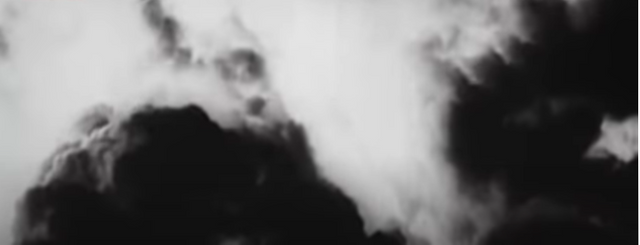
Experimenting with high energy physics?
Livermore's director is Kim Budil reminds that the National Ignition Facility [NIF] is the world's largest, most energetic laser.
The NIF was built in the 1990's to create conditions in the laboratory that had previously been accessible only in the most extreme objects in the universe like the center of giant planets like the sun or in operating nuclear weapons.
The goal, to study that high energy, very high density in a lot of detail.
What has been happening on a large scale?
Solar Flares? Sunspot documentation?
The NIF was built for $3.5 billion to ignite self sustaining fusion.
They tried over 200 times for over 13 years, but like a car with a weak batter, the atomic engine would never turn over.
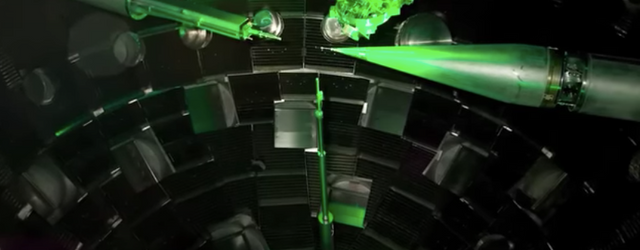
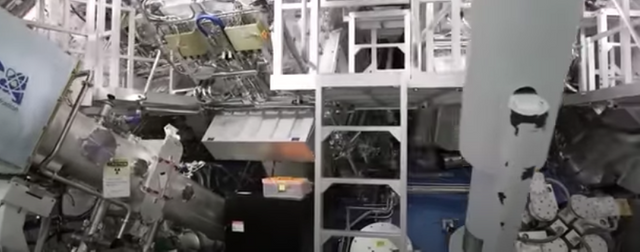
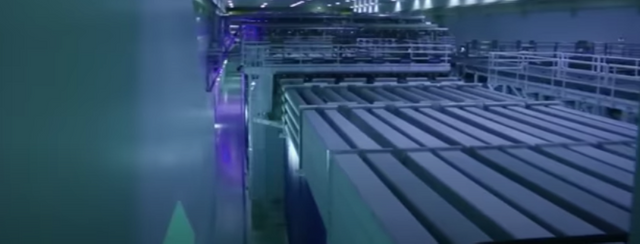
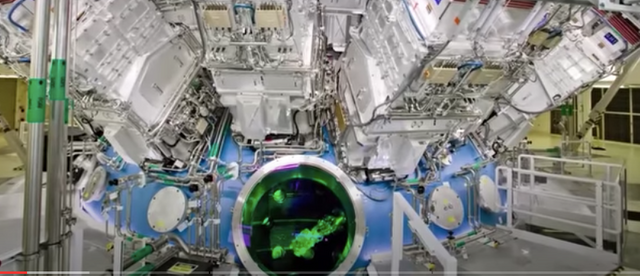
Called names~
The
Non Ignition Facility
Never Ignition Facility
eventually
The Nearly Ignition Facility
Ignition~ Igniting a Fusion Reaction that puts out more energy than the lasers put in.
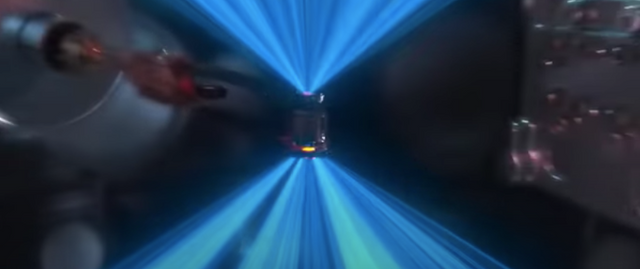
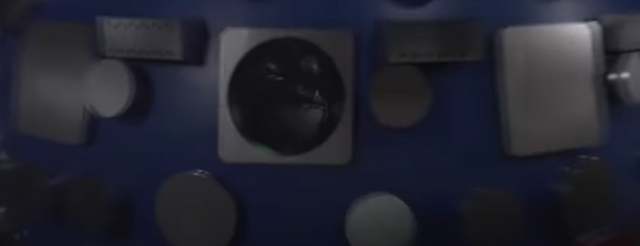
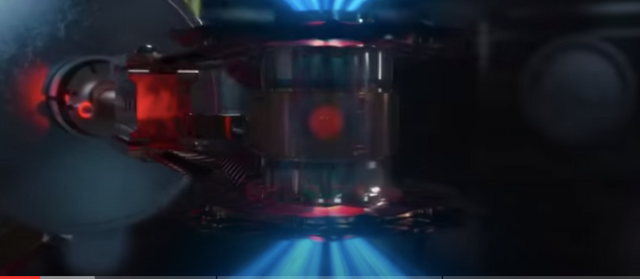
"If you can get it hot enough, dense enough, fast enough and hold it together long enough. . .the fusion reactions start to self sustain."*
This is what happened in December of 2022.
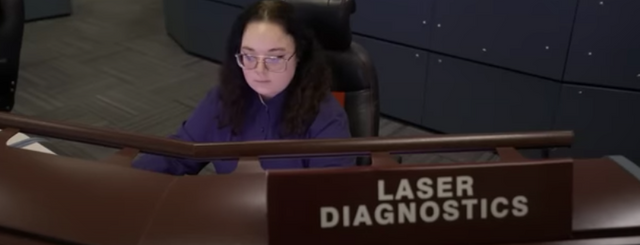
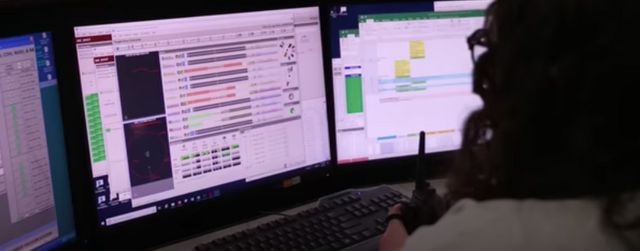
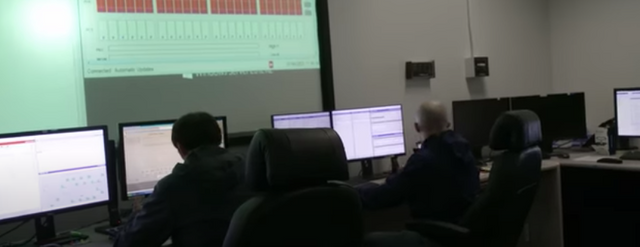
In December of 2022, the laser shot fired from this control room, put two units of energy into the experiment.
Atoms from two units of energy began fusing and about 3 units of energy came out
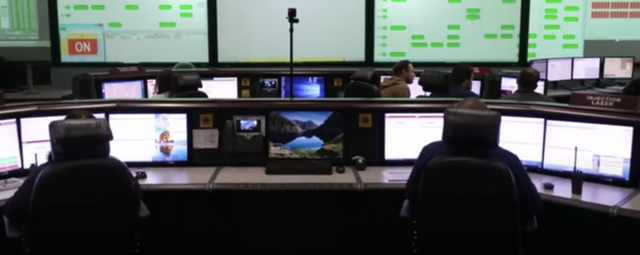
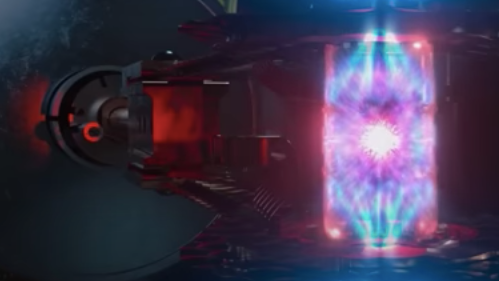
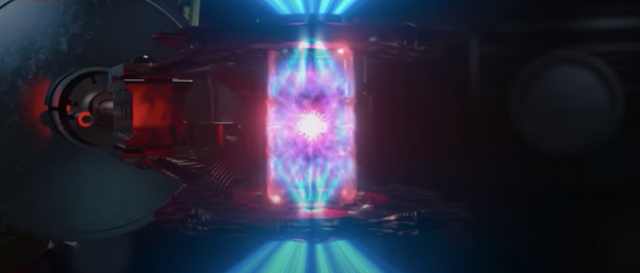
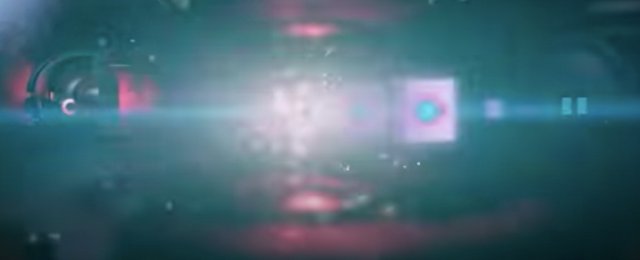
Tammy Ma, who leads the lab's laser fusion research initiatives, states got the call they had achieved success while waiting for a plane and she burst into tears of joy, physically started shaking and jumping up and down.
How many of you have had this happen for something you have worked so hard on and either received good news or news of the more hateful crowd coming up against you and trying to stop you?
The energy required for this kind of fusion is delivered in these tubes that are longer than a football field.
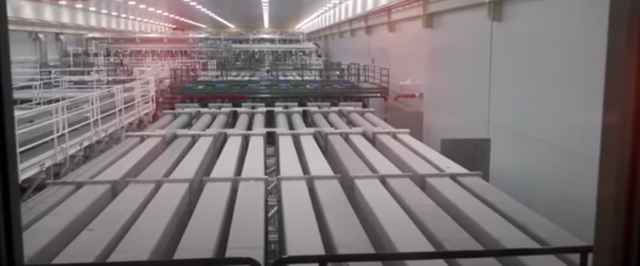
There are a total of 192 lasers each one being one of the most energetic in the world!
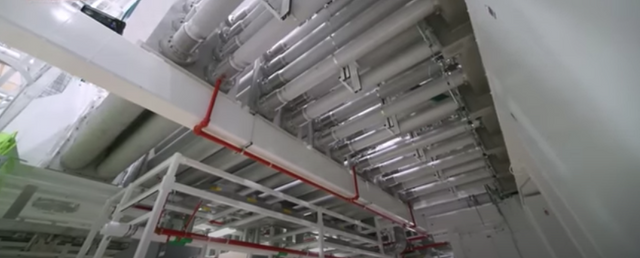
They are millions of degrees hot, which is why keys are used to lock up the lasers.
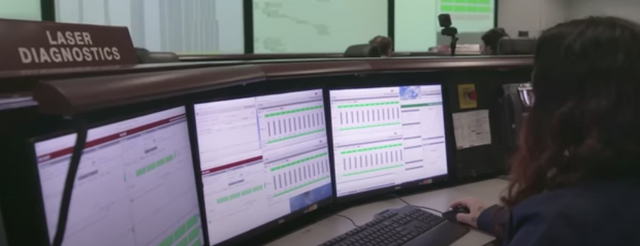
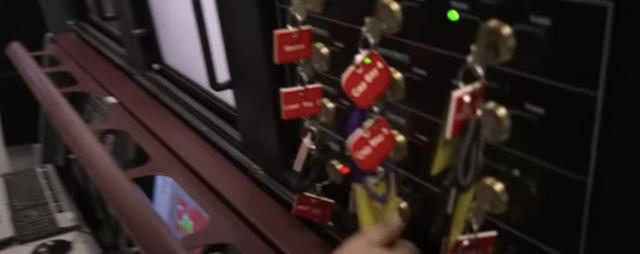
The beams strike with the power 100 times greater than the national power grid.
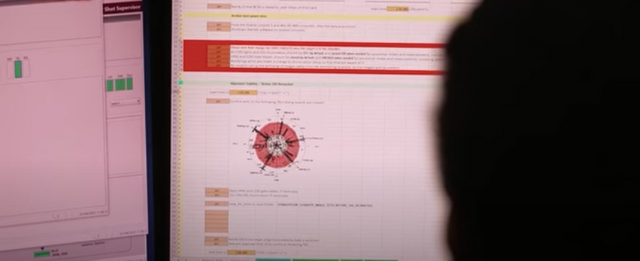
Lights do not go out at home when they take a shot because these capacitors store the electricity in the tubes which the lasers amplify by racing back and forth and the flash is a fraction of a second.
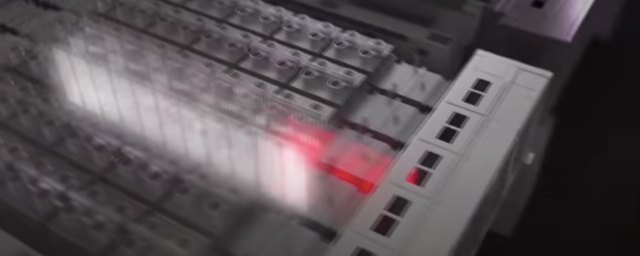
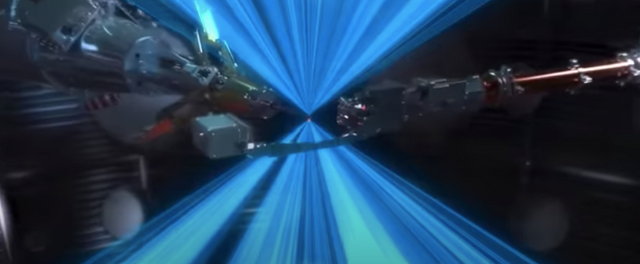
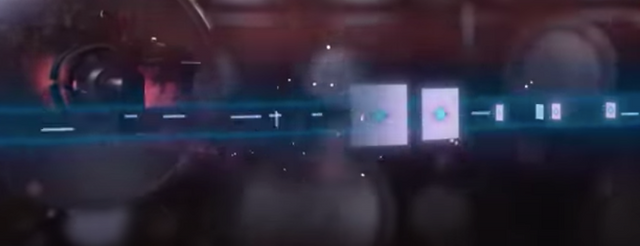
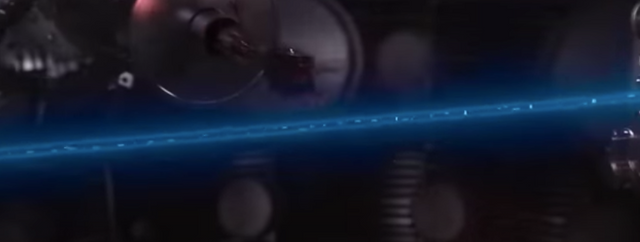
This is because they need to achieve these incredible conditions which are hotter and denser than the center of the sun.
All of this laser energy is required to get to these very high energy densities.
All of this energy vaporizes a target nearly too small to see.
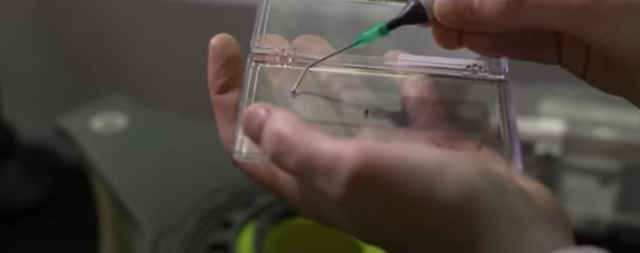
Michael Stardmann's team builds the hollow target shell that are loaded hydrogen at 430 degrees below 0.
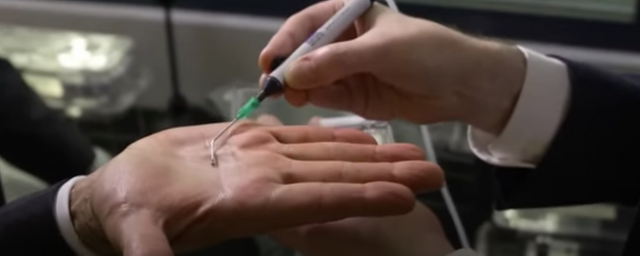
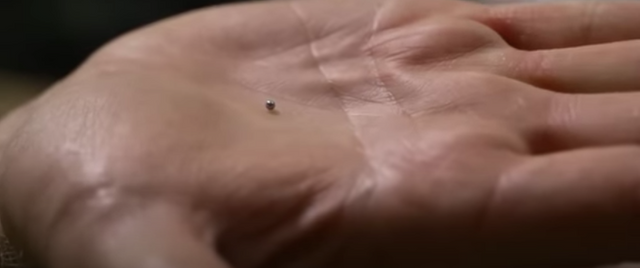
The precision needed for making these shells is extreme.
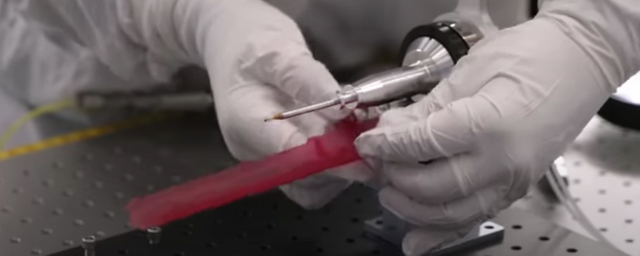
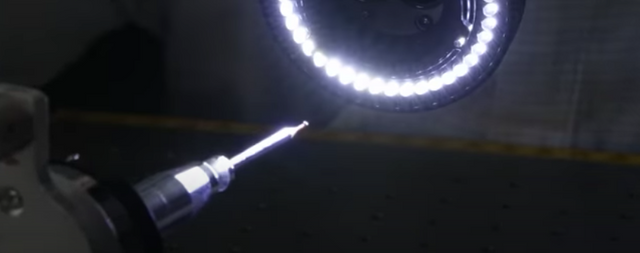
These shells are perfectly round.
They have a roughness that is about a hundred times better than a mirror.
If it wasn't smoother than a mirror, imperfections would make the implosion of the atoms uneven causing a fusion fizzle.
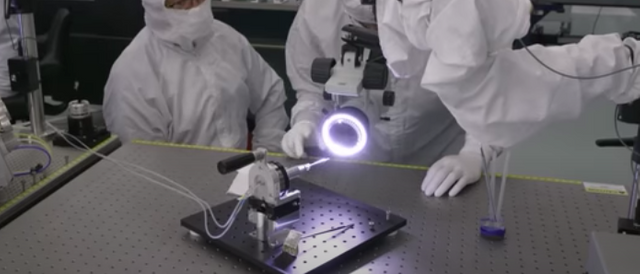
A fizzle occurs when the detonation of a device for creating a nuclear explosion (such as a nuclear weapon) grossly fails to meet its expected yield. The bombs still detonate, but the detonation is much less than anticipated. The cause(s) for the failure can be linked to improper design, poor construction, or lack of expertise.
This requires the targets to be as close to perfect as humanly possible.
Stadermann states that they do think they are one of the most perfect items they have on earth.
Stadermann's team pursues this perfection by vaporizing carbon and forming the shell out of diamond.
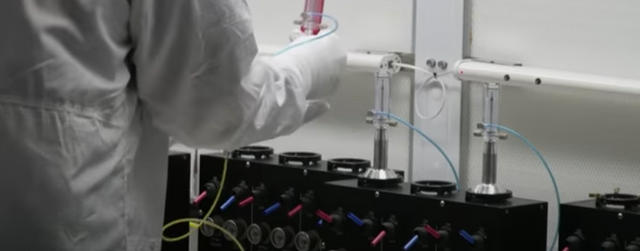
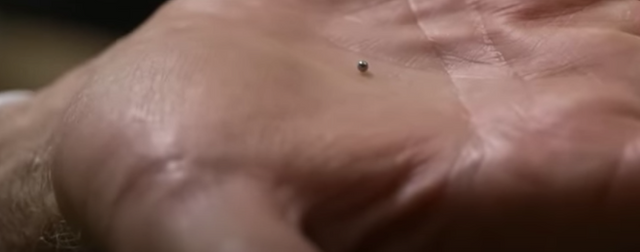
They build 1500 possible targets a year in order to make 150 nearly perfect!
All of the components are brought together under the microscope itself and then the assembler uses electromechanical stages to put the parts where they are supposed to go to put them together.
Then Stadermann's team applies glue using a hair.
Yes, you read that right, a Hair!
I need you to REMEMBER~
Luke 12:7 KJV
But even the very hairs of your head are all numbered. Fear not therefore: ye are of more value than many sparrows.
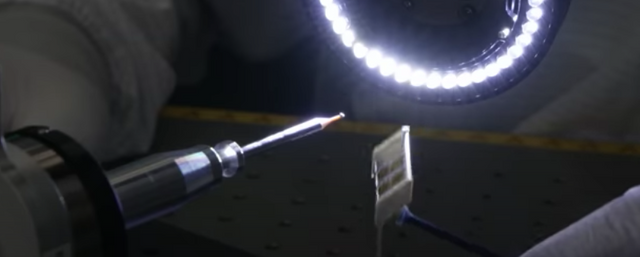
This can be like an eyelash or something similar like a cat whisker.
This is how the glue is applied.
Just like many of us also apply a bonder to metals or glass crystals in mechanical watches with a wire or toothpick for precision.
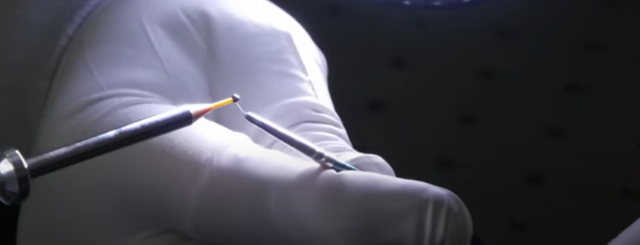
As the laser gives off only a finite amount of energy, to drive a bigger capsule more energy is needed, despite the large size of the facility, it is relatively small for the type of combustion needed to run these types of experiments considering all of the potential energy and combustion trying to be contained.
It could be larger, but then the laser would have to be larger to get the ratio just right.
On December 5, 2022 they used a thicker target so it would hold it's shape longer, and they figured out how to boost the power of the laser shot without damaging the lasers.
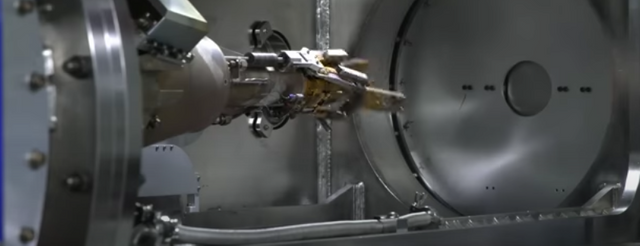
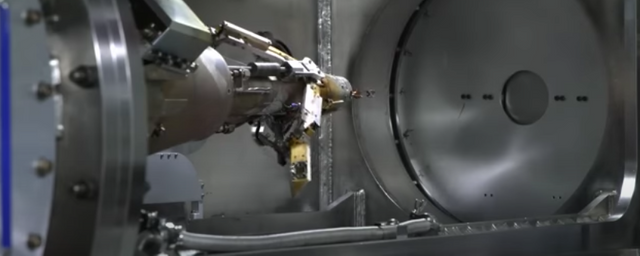
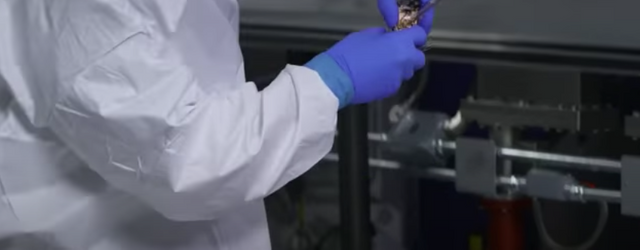
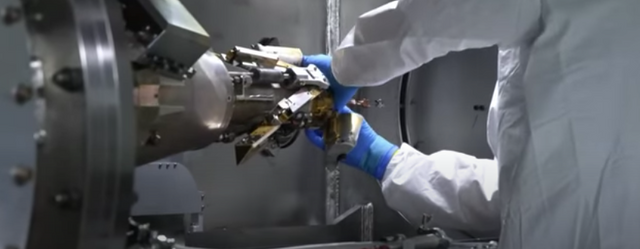
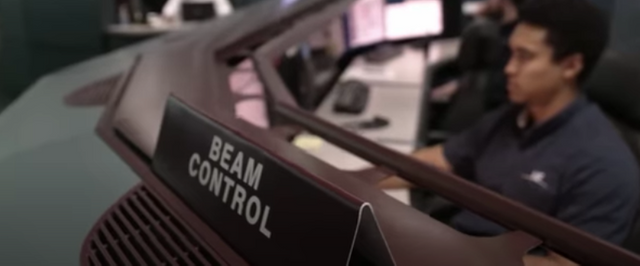
Here is an example of the target before the shot [heard around the world]
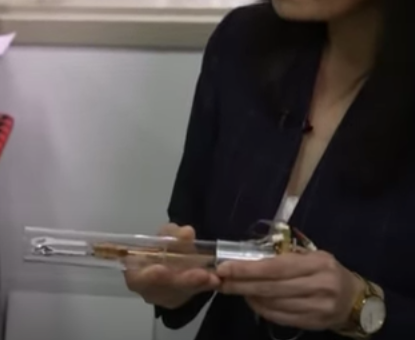
The diamond shell is inside the silver colored cylinder.

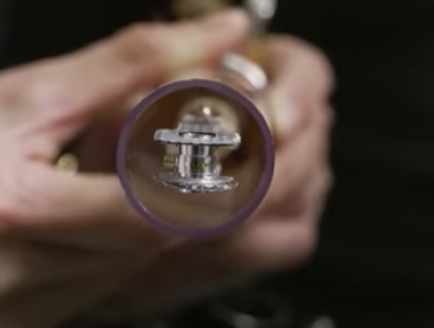
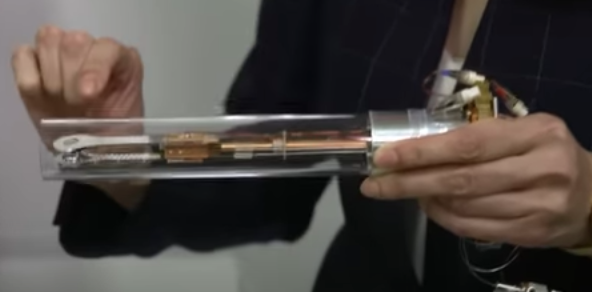
This goes into a vacuum chamber three stories tall.
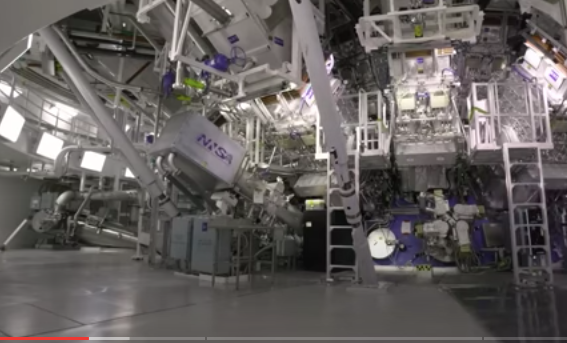
Difficult to see in here as there are so many lasers and instruments.
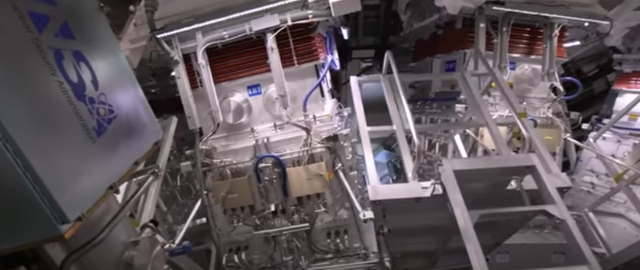
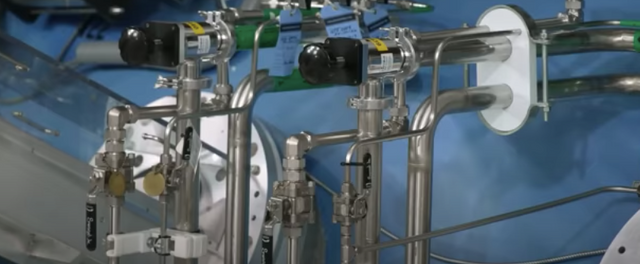
This instrument is called Dante because it measures the fires of hell.
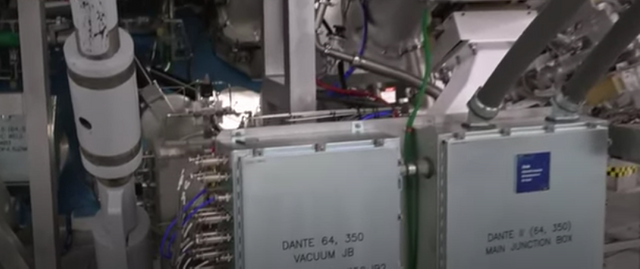

This is what is left from the target assembly that changed history on 12.5.2022
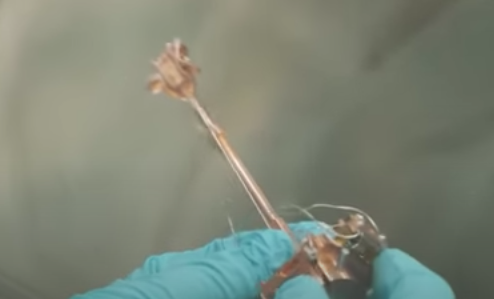
An artifact like the first lightbulb or telephone? You decide.
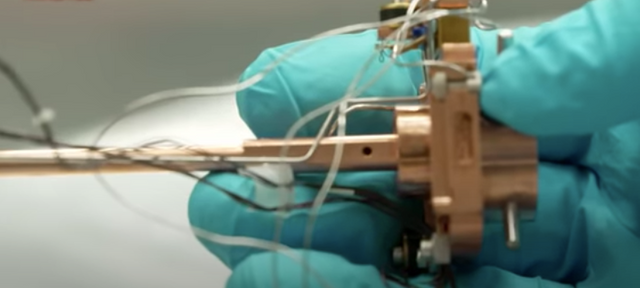
The target cylinder was blasted to oblivion.
The copper support that held it was peeled backward.
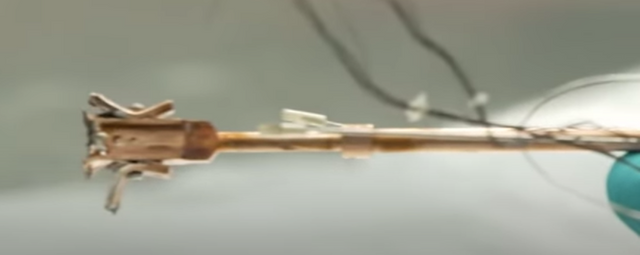
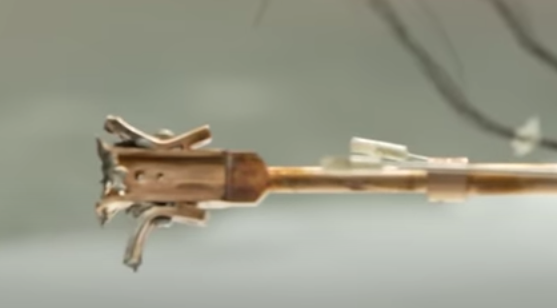
The explosion on the end of this was hotter than the center of the sun.
This team was able to achieve temperatures that were hotter than the solar system.
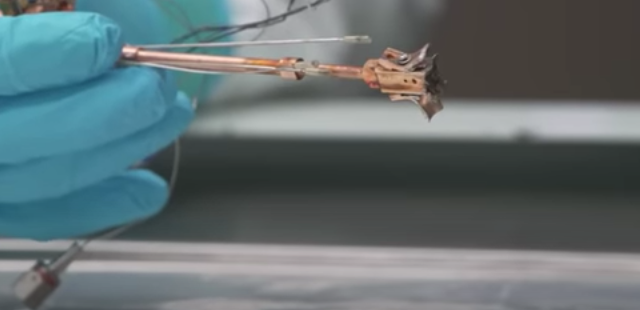
Could this make a mega change in electric power?
So unlike today's nuclear plants which split atoms apart, fusing them is many times more powerful.

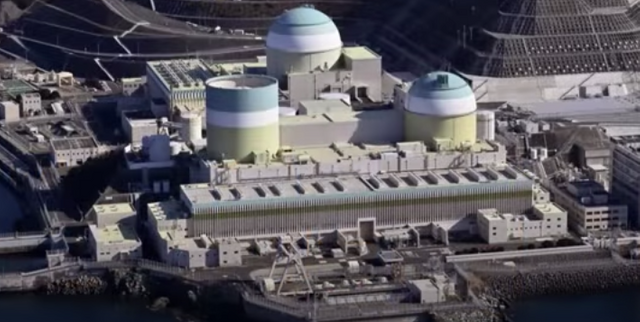
Do you remember who it was way back in history that told people in order to make war heads and weapons, they had to first understand how to break it apart?
Go here if not familiar with my earlier work and teachings and training,
https://steemit.com/illuminati/@artistiquejewels/nanotech-climate-control-the-dawn-of-creating-black-matter-and-what-is-really-going-on
Does it appear there are always two sides?
#GoodVsEvil, #FightTheGoodFight, #DarkToLight
One attempting to help humanity through it's research and another trying to harm?
Were you not told~ Ephesians 6:12
King James Version
12 For we wrestle not against flesh and blood, but against principalities, against powers, against the rulers of the darkness of this world, against spiritual wickedness in high places
https://lasers.llnl.gov/about/who-works-at-nif/management/michael-stadermann
Inertial Fusion Energy found here on this gov site.
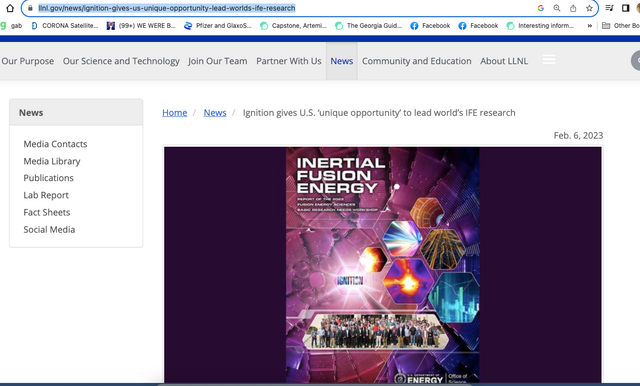
https://www.llnl.gov/news/ignition-gives-us-unique-opportunity-lead-worlds-ife-research
https://www.llnl.gov/news/lawrence-livermore-national-laboratory-achieves-fusion-ignition
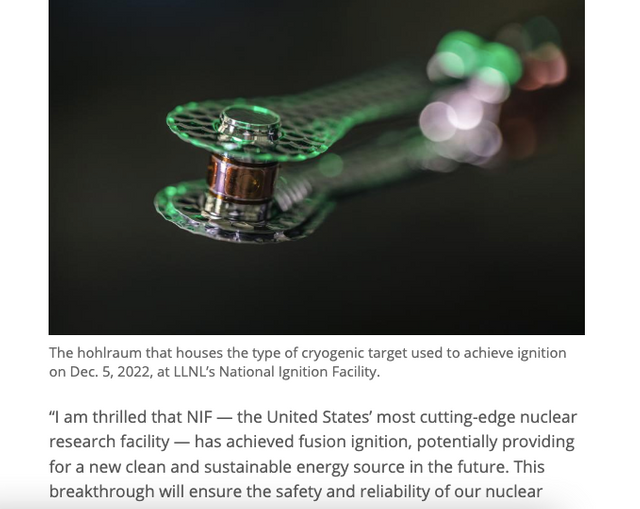
In accomplishing one of the most complex scientific grand challenges of the last century and completing a long-awaited objective for NIF, officials and scientists confirmed that, for a fraction of a second, LLNL researchers produced 3.15 megajoules (MJ) of fusion energy output using 2.05 MJ of laser energy delivered to the target, demonstrating the fundamental science basis for inertial fusion energy. The results were peer-reviewed and verified by outside parties, scientists said.
Hailed by government officials as a watershed moment for fusion energy, the results are a “proof of concept” that a thermonuclear fusion reaction — the same reaction that powers the sun and stars — can be reproduced in the laboratory and result in a net energy gain, opening doors to a new scientific understanding of fusion and technological advancements in national defense and energy production, speakers said.
Following Granholm’s announcement, White House OSTP Director Arati Prabhakar described her brief experience as a summer student working on fusion research at LLNL in the 1970s and congratulated generations of scientists for overcoming decades of struggles and setbacks to accomplish a true “scientific milestone.”
“They never lost sight of this goaI and I think this is such a tremendous example of what perseverance really can achieve,” Prabhakar said. “It took so many different kinds of advances that ultimately came together to the point that we could replicate that fusion activity in this controllable way in a laboratory … The prospect [of fusion energy] now is one step closer in a really exciting way. This is an amazing example of the power of America's research and development enterprise.”
With fusion ignition there is no long term radiation and it is easy to turn off with no melt downs.
Will getting from the first ignition to a power plant be challenging?
On average the NIF takes on average a little more than one shot per day.
If it were a commercial plant about 10 shots per second would be required.
It's not only about increasing the repetition rate, but also in getting the gain from the targets to go up to about a factor of 100.
Not only would the reactions have to produce 100 times more energy , but a power plant would need 900,000 perfect diamond shells a day.
The lasers would also have to be far more efficient.
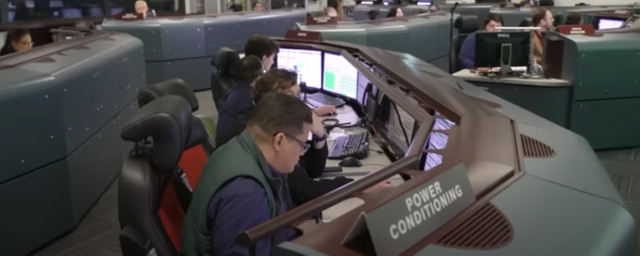
For December's shot it took 300 units of power to fire the lasers to put two units in and get three units out.
December's shot produced about enough excess power to boil two pots of coffee.
How to scale up?
There are more than 30 private companies betting this scaling up can happen sooner than later.
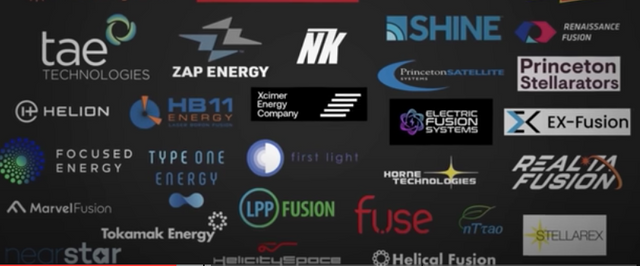
How about various approaches to using Fusion Power?
How about using magnets rather than lasers?
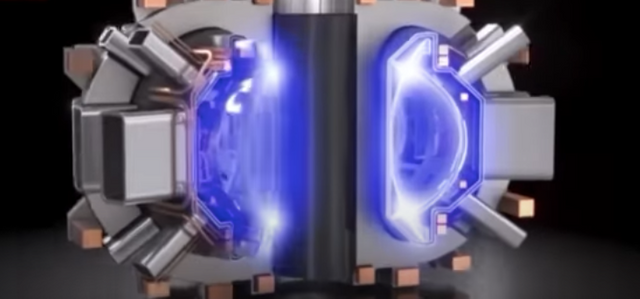
$3 billion dollars in private money floating into these companies in the last 18 months or so?
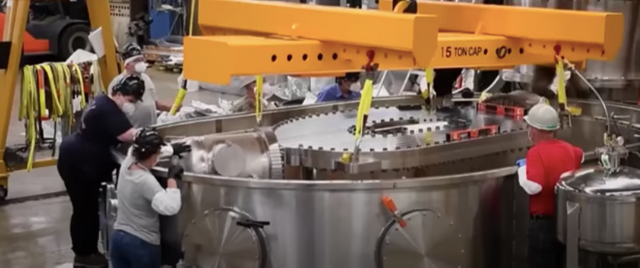
Lawrence Livermore's director, Kim Budil is certain they can repeat this shot or process.
Budil agrees the obstacles are enormous, but commercial fusion power could be demonstrated in her best guess in 20 years or so with enough funding and dedication.
WHAT IF it were possible Faster?
Would about the limitless quantum?
Some liken the first ignition to the first Wright Brother's flight which covered only 120 feet.
It was 44 years from a puddle jump to super sonic flight.
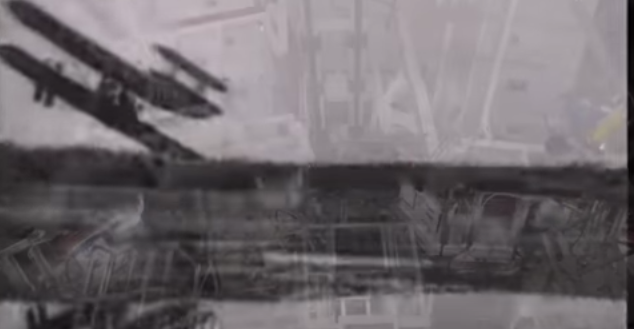
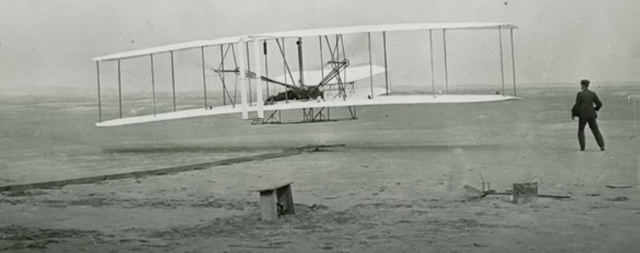
Has the transition from fossil fuels to sustainable electric power gone mainstream most visibly in the auto industry?
What about #LithiumValley and the major car companies chasing Tesla?
Ambitious plans for fleets of electric vehicles?
Running on Lithium Batteries?
Does the United States have massive quantities of Lithium?
Why have they been slow to invest in the mining and extraction of this metal?
What about Lithium mines in a long neglected impoverished area of California?
By the Salton Sea not far from the Mexico border?
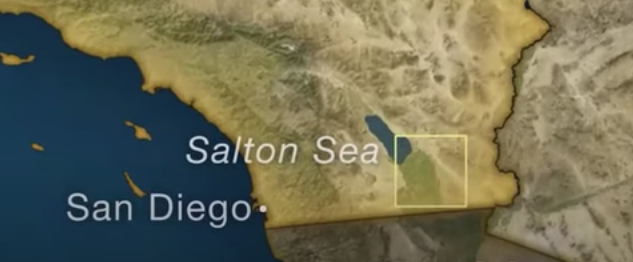
This region has been tagged as Lithium Valley.
Is this similar to the 1849 Gold Rush in which companies are racing to strike a new kind of "gold?"

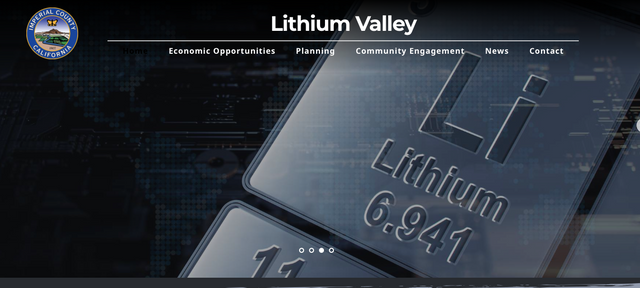
https://lithiumvalley.imperialcounty.org/
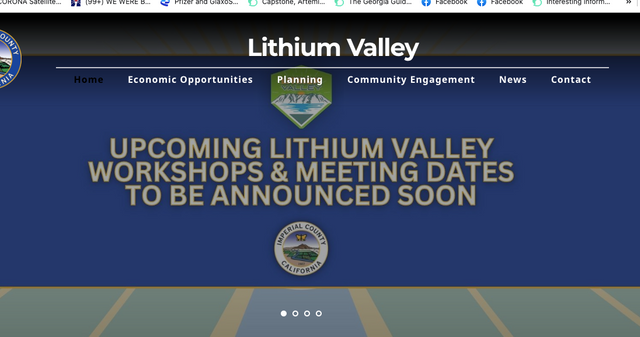

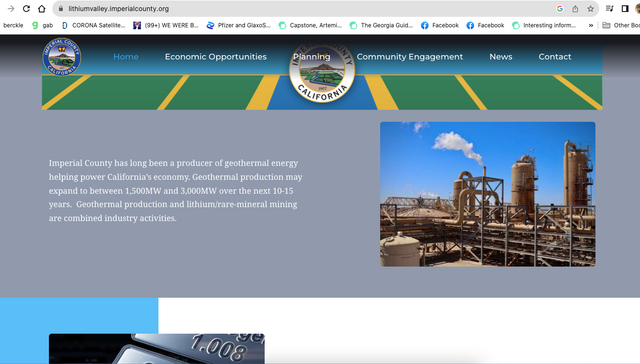
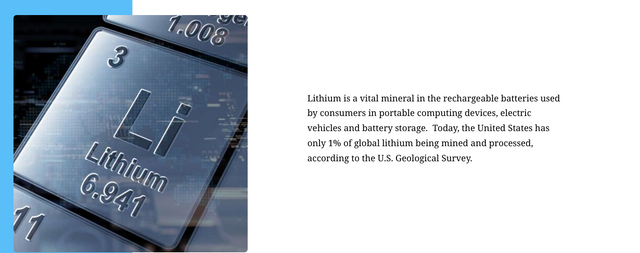
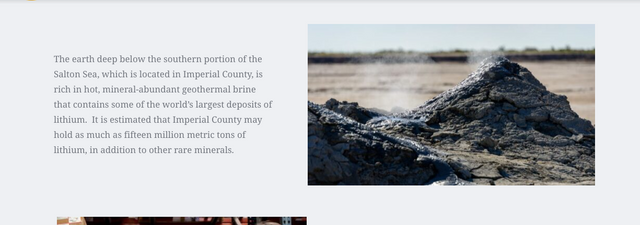

TENTATIVE SCHEDULE OF 2023 COMMUNITY ENGAGEMENT ACTIVITIES
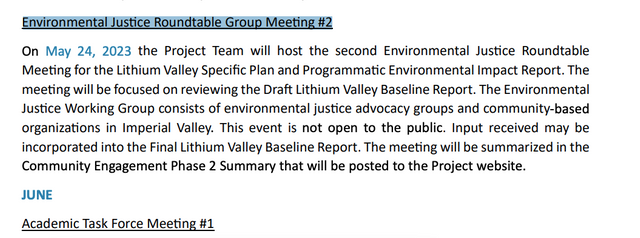
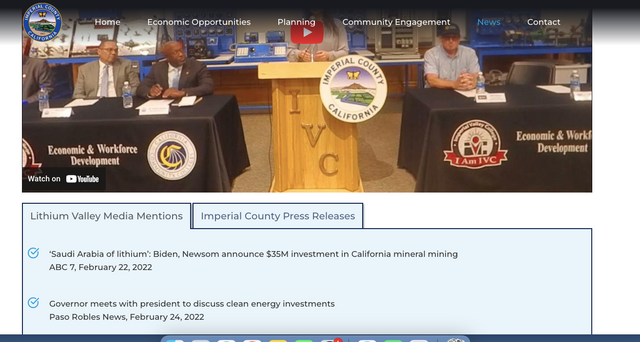
https://lithiumvalley.imperialcounty.org/news/
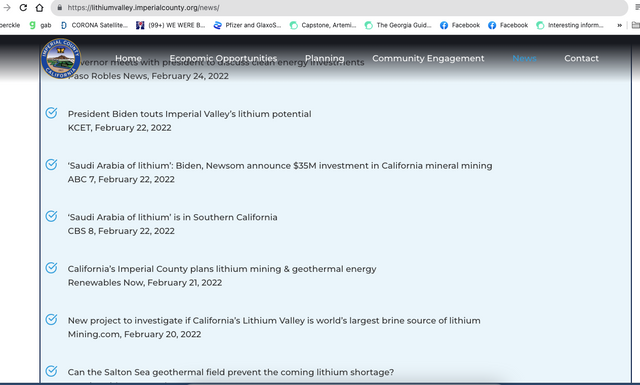
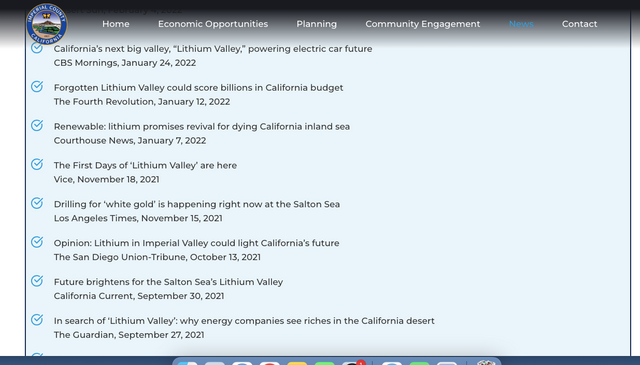
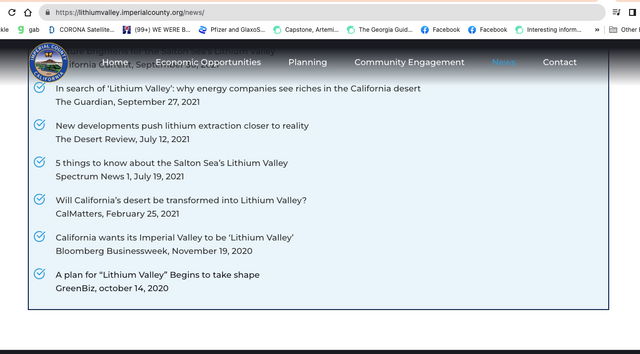
Lithium Valley is south of Palm Springs,
https://steemit.com/tunnels/@artistiquejewels/tunnels-in-america-and-some-throughout-the-world
Giant Geothermal Field at Lithium Valley near #PalmSprings?
Palm Springs is a desert resort city in Riverside County, California, United States, within the Colorado Desert's Coachella Valley.
The city covers approximately 94 square miles (240 km2), making it the largest city in Riverside County by land area.
With multiple plots in checkerboard pattern, more than 10% of the city is part of the Agua Caliente Band of Cahuilla Indians reservation land and is the administrative capital of the most populated reservation in California.
The population of Palm Springs was 44,575 as of the 2020 census, but because Palm Springs is a retirement location and a winter snowbird destination, the city's population triples between November and March.
The first humans to settle in the area were the Cahuilla people, who arrived 2,000 years ago.
Cahuilla Indians lived here in isolation from other cultures for hundreds of years prior to European contact.
They spoke Ivilyuat, which is a Uto-Aztecan language.
Numerous prominent and powerful Cahuilla leaders were from the area, including Cahuilla Lion (Chief Juan Antonio).
The Cahuilla Indians had several permanent settlements in the canyons of Palm Springs due to the abundance of water and shade. Various hot springs were used during wintertime.
The Cahuilla hunted rabbit, mountain goat, and quail while trapping fish in nearby lakes and rivers. While men were responsible for hunting, women were responsible for collecting berries, acorns, and seeds. They also made tortillas from mesquite seeds. While the Cahuillas often spent the summers in Indian Canyons, the current site of Spa Resort Casino in downtown was often used during winter due to its natural hot springs.
Native American petroglyphs can be seen in Tahquitz, Chino, and Indian Canyons. The Cahuilla's irrigation ditches, dams, and house pits can also be seen here.[16] Ancient petroglyphs, pictographs and mortar holes can be seen in Andreas Canyon. The mortar holes were used to grind acorns into meal.
The Agua Caliente ("Hot Water") Reservation was established in 1876 and consists of 31,128 acres (12,597 ha). Six thousand seven hundred acres (2,700 ha) are located by Downtown Palm Springs.
The Native American land is on long lease land and next to one of California's high-end communities, making the tribe one of the wealthiest in California.
When the Agua Caliente Reservation was established by the United States government in 1876, the reservation land was composed of alternating sections (640 acres or 260 ha) of land laid out across the desert in a checkerboard pattern. The alternating non-reservation sections were granted to the Southern Pacific Railroad as an incentive to bring rail lines through the Sonoran Desert.
Presently the Agua Caliente Band of Cahuilla Indians is composed of several smaller bands who live in the modern-day Coachella Valley and San Gorgonio Pass. The Agua Caliente Reservation occupies 32,000 acres (13,000 ha), of which 6,700 acres (2,700 ha) lie within the city limits, making the Agua Caliente natives the city's largest landowners. (Tribal enrollment as of 2010 was 410 people.
With the Treaty of Guadalupe Hidalgo after the Mexican-American war, the region became part of the United States in 1848.
One possible origin of palm in the place name comes from early Spanish explorers who referred to the area as La Palma de la Mano de Dios or "The Palm of God's hand".
The earliest use of the name "Palm Springs" is from United States Topographical Engineers who used the term in 1853 maps.
The first European resident in Palm Springs itself was Jack Summers, who ran the stagecoach station on the Bradshaw Trail in 1862.[30]: 44, 149 Fourteen years later (1876), the Southern Pacific railroad was laid 6 miles (9.5 km) to the north, isolating the station.
In 1880, local Indian Pedro Chino was selling parcels near the springs to William Van Slyke and Mathew Bryne in a series of questionable transactions; they in turn brought in W. R. Porter to help market their property through the "Palm City Land and Water Company".
By 1885, when San Francisco attorney (later known as "Judge") John Guthrie McCallum began buying property in Palm Springs, the name was already in wide acceptance. The area was named "Palm Valley" when McCallum incorporated the "Palm Valley Land and Water Company" with partners O.C. Miller, H.C. Campbell, and James Adams, M.D.
McCallum, who had brought his ill son to the dry climate for health, brought in irrigation advocate Dr. Oliver Wozencroft and engineer J. P. Lippincott to help construct a canal from the Whitewater River to fruit orchards on his property.
He also asked Dr. Welwood Murray to establish a hotel across the street from his residence.
The city became a fashionable resort in the 1900s when health tourists arrived with conditions that required dry heat. Because of the heat, however, the population dropped markedly in the summer months.
In 1906 naturalist and travel writer George Wharton James's two volume The Wonders of the Colorado Desert described Palm Springs as having "great charms and attractiveness" and included an account of his stay at Murray's hotel.
As James also described, Palm Springs was more comfortable in its microclimate because the area was covered in the shadow of Mount San Jacinto to the west and in the winter the mountains block cold winds from the San Gorgonio pass.
Nellie N. Coffman and her physician husband Harry established The Desert Inn as a hotel and sanitarium in 1909.
It was expanded as a modern hotel in 1927 and continued on until 1967.
Coffman herself was a "driving force" in the city's tourism industry until her death in 1950.

the El Mirador, a large and luxurious resort that attracted the biggest movie stars; opening in 1927, its prominent feature was a 68-foot-tall (21 m) Renaissance style tower.
Silent film star Fritzi Ridgeway's 100-room Hotel del Tahquitz was built in 1929, next to the "Fool's Folly" mansion built by Chicago heiress Lois Kellogg.
Golfing was available at the O'Donnell 9 hole course (1926) and the El Mirador (1929) course.
Hollywood movie stars were attracted by the hot dry, sunny weather and seclusion—they built homes and estates in the Warm Sands, The Mesa, and Historic Tennis Club neighborhoods (see Neighborhoods below). About 20,000 visitors came to the area in 1922.
Palm Springs became popular with movie stars in the 1930s and estate building expanded into the Movie Colony neighborhoods, Tahquitz River Estates, and Las Palmas neighborhoods.
Actors Charles Farrell and Ralph Bellamy opened the Racquet Club in 1934 and Pearl McCallum opened the Tennis Club in 1937.
Nightclubs were set up as well, with Al Wertheimer opening
The Dunes outside of Palm Springs in 1934 and the Chi Chi nightclub opening in 1936.
Besides the gambling available at the Dunes Club, other casinos included The 139 Club and The Cove Club outside of the city.
Southern California's first self-contained shopping center was in Palm Springs, La Plaza (originally Palm Springs Plaza), and on-street, open air center anchored by a small Desmond's department store, in 1936. The three-level parking garage for 141 cars was an innovation and the largest in Riverside County at that time.
Together with a Sears at 611 Palm Canyon Dr., for two decades, downtown boasted seven department stores, plus the Palm Springs Mall 1.5 miles (2.5 km) to the east operating from 1959 to 2005.
When the United States entered World War II, Palm Springs and the Coachella Valley were important in the war effort. The original airfield near Palm Springs became a staging area for the Air Corps Ferrying Command's 21st Ferrying Group in November 1941 and a new airfield was built 1⁄2 mile (0.8 km) from the old site.
The new airfield, designated Palm Springs Army Airfield was completed in early 1942.
Personnel from the Air Transport Command 560th Army Air Forces Base Unit stayed at the La Paz Guest Ranch and training was conducted at the airfield by the 72nd and 73rd Ferrying Squadrons. Later training was provided by the IV Fighter Command 459th Base Headquarters and Air Base Squadron.
Eight months before Pearl Harbor Day, the El Mirador Hotel was fully booked and adding new facilities.
After the war started, the U.S. government bought the hotel from owner Warren Phinney for $750,000,[66] just over $13,000,000 if including inflation in 2020, and converted it into the Torney General Hospital, with Italian prisoners of war serving as kitchen help and orderlies in 1944 and 1945.
Through the war it was staffed with 1,500 personnel and treated some 19,000 patients.
Architectural modernists flourished with commissions from the stars, using the city to explore architectural innovations, new artistic venues, and an exotic back-to-the-land experiences. Inventive architects designed unique vacation houses, such as steel houses with prefabricated panels and folding roofs, a glass-and-steel house in a boulder-strewn landscape, and a carousel house that turned to avoid the sun's glare.
In 1946, Richard Neutra designed the Kaufmann Desert House. A modernist classic, this mostly glass residence incorporated the latest technological advances in building materials, using natural lighting and floating planes and flowing space for proportion and detail.
In recent years an energetic preservation program has protected and enhanced many classic buildings.
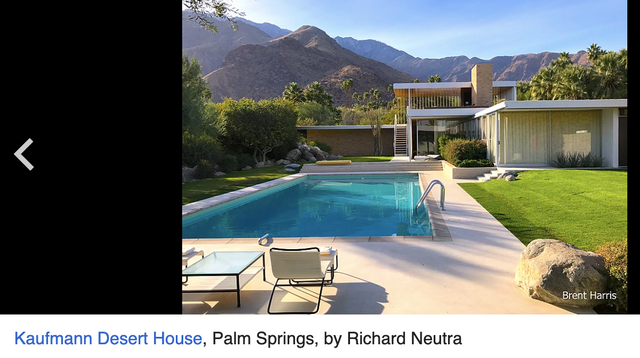
Hollywood values permeated the resort as it combined celebrity, health, new wealth, and sex. As Culver (2010) explains: "The bohemian sexual and marital mores already apparent in Hollywood intersected with the resort atmosphere of Palm Springs, and this new, more open sexuality would gradually appear elsewhere in national tourist culture."
During this period, the city government, stimulated by real estate developers, systematically removed and excluded poor people and Indians.
Palm Springs was pictured by the French photographer Robert Doisneau in November 1960 as part of an assignment for Fortune[74] on the construction of golf courses in this particularly dry and hot area of the Colorado desert. Doisneau submitted around 300 slides following his ten-day stay depicting the lifestyle of wealthy retirees and Hollywood stars in the 1960s. At the time, Palm Springs counted just 19 courses, which had grown to 125 by 2010.
Similar to the pre-war era, Palm Springs remained popular with the rich and famous of Hollywood, as well as retirees and Canadian tourists.[84] Between 1947 and 1965, the Alexander Construction Company built some 2,200 houses in Palm Springs effectively doubling its housing capacity.
As the 1970s drew to a close, increasing numbers of retirees moved to the Coachella Valley. As a result, Palm Springs began to evolve from a virtual ghost town in the summer to a year-round community. Businesses and hotels that used to close for the months of July and August instead remained open all summer. As commerce grew, so too did the number of families with children.
Later in the 1970s numerous Chicago mobsters invested $50 million in the Palm Springs area, buying houses, land, and businesses.
While Palm Springs faced competition from the desert cities to the east in the later 1980s, it has continued to prosper into the 21st century.
Palm Springs (as well as surrounding areas) became a desired destination as the COVID-19 pandemic began; the city saw an increase of residents from larger cities like Los Angeles, San Francisco, and Seattle, with new residents seeking less dense areas from which to work remotely.[
Numerous hotels, restaurants and attractions cater to tourists, while shoppers can find a variety of high-end boutiques in downtown and uptown Palm Springs. The city is home to 20 clothing-optional resorts including many catering to gay men.
Palm Springs is a village in Palm Beach County, Florida, United States, situated approximately 61 mi (98 km) north of Miami. The village's name was likely derived from the resort city of Palm Springs, California.
William A. Boutwell operated a dairy farm on 5 acres (2.0 ha) of land in modern-day Palm Springs beginning in 1927, which expanded to about 700 acres (280 ha) prior to his retirement in 1956. One year later, the Florida Legislature approved a charter establishing the village of Palm Springs as Palm Beach County's 30th municipality on May 31, 1957. At the time of incorporation, the village consisted only of farmland, a dairy barn, and no permanent residents. Within two years, around 800 homes had been built, and four schools were constructed in or near Palm Springs between 1959 and 1970. The first village hall was erected in 1960.
Palm Springs has been expanding through annexation since 1998, more than doubling the village's land area and population within a few decades. Also around that time, the village government began planning for a new municipal complex, which opened in the mid-2000s. By 2010, Palm Springs became the first municipality in Palm Beach County in which a majority of its residents are of Hispanic or Latino ancestry. The village is also the home of the Fulton-Holland Educational Services Center, the headquarters of the School District of Palm Beach County.
The way the land was obtained starts to remind one of~
#DISNEY, FALLEN KINGDOM? YOU DECIDE!
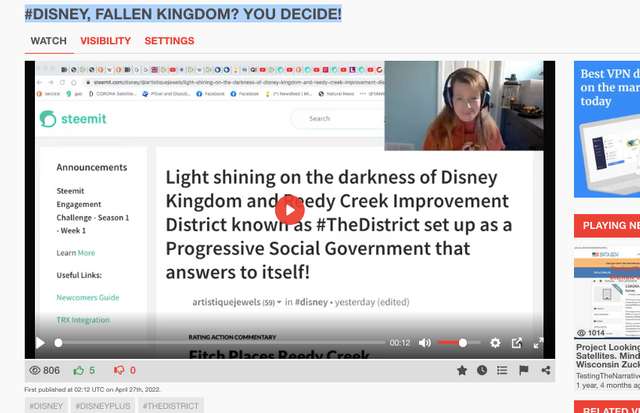
https://www.bitchute.com/video/bJKstOM3DFQZ/
TIME ANOMALIES, SOLAR FLARES, ODDITIES 9.3 OF THIS YEAR AND IN 2012. DIAMONDS FOR A 9 YR BATTERY?
https://www.bitchute.com/video/32MoD3z9eMaQ/
ENERGY ANOMALIES. WHAT IS GOING ON WITH ENERGY FIELDS, SUNSPOTS AND NUMBERS?
https://www.bitchute.com/video/hXPDmNGXXcdq/
Some believe Lithium Valley is a world class resource in excess of 300 tons of Lithium per year.
It appears much of government is Banking on this when looking at who all have their hands and programming in this Lithium project. Just check out the screenshots above.
Some say this is now far more than half the world's supply of Lithium.
Some are using an existing electric plant that is powered by the vast Geothermal underground field to extract the Lithium.
They believe it could support 7.5 million or more electric vehicles per year which is half of the total U.S. car and truck sales.
The electric plant will be 20,000 tons per year which is equivalent to 500,000 vehicles per year.
Once up and running the Lithium will be shipped, refined and processed into millions of rechargeable electric car batteries.
Over 50% of lineup and sales will be from battery electric vehicles by the end of the decade.
Stellantis, which owns Chrysler, Jeep and Ram trucks states it really is the Industrial Revolution of our time.
Stellantis is investing $35 billion dollars in an ambitious, historic transformation.
They are reimagining their factories on their assembly plants, they are already rolling their plug in hybrids.
They are also looking to two new battery joint ventures that are in full construction.
The biggest technological changes in the vehicle industry in nearly a hundred years!
The Salton Sea area believes it can supply the Lithium battery needs for all American Car manufacturers.
A Stellantis executive states they will take as much as they can get and what they have already secured earlier.
Lithium is key to powering electric cars as the dense metal helps make car batteries rechargeable.
There is a lot around, but extracting it is considered dirty business.
Most comes from rock mines in Australia.
Or as powder evaporated from mineral ponds in South America.
The US has one evaporation plant in Nevada.
The Salton Sea area believes it can supply the needs for all American manufacturers.
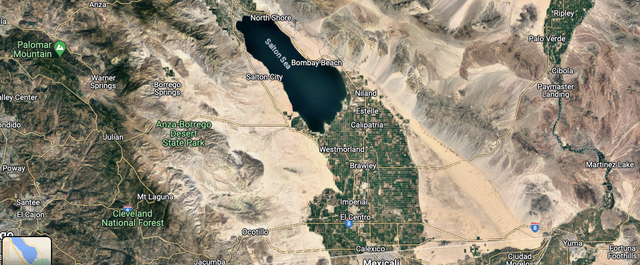
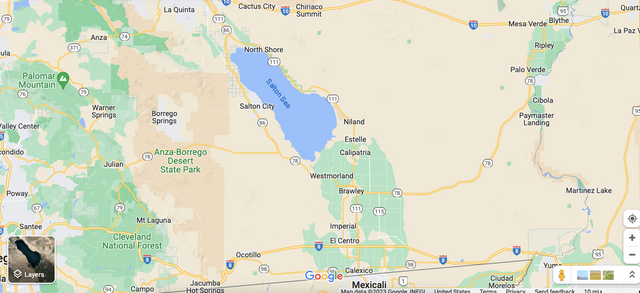
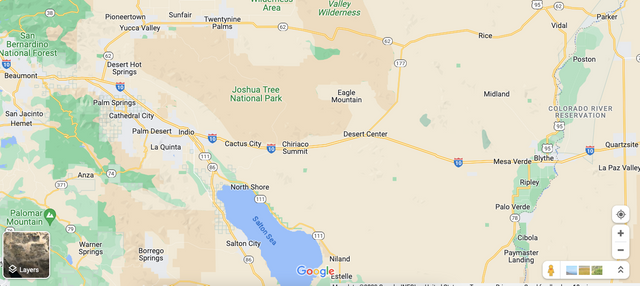
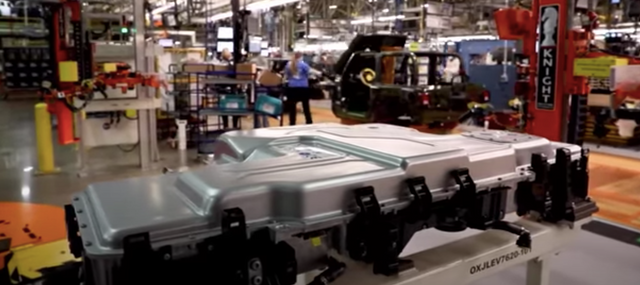
Some E car manufacturers have stated they will take as much as what they can get and as much as they have secured early!
Could this be due to the fact that Lithium is key to powering electric cars as the dense metal helps make batteries rechargeable?
There IS a lot around, but it is known that extracting it is "dirty business."
Most of the Lithium comes from rock mines in Australia or
as powder evaporated from mineral ponds in South America.
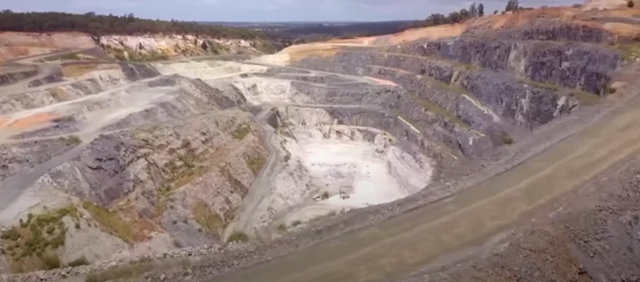
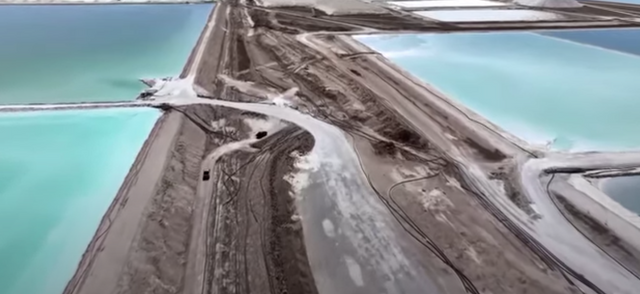
Here is the US evaporation plant in Nevada,
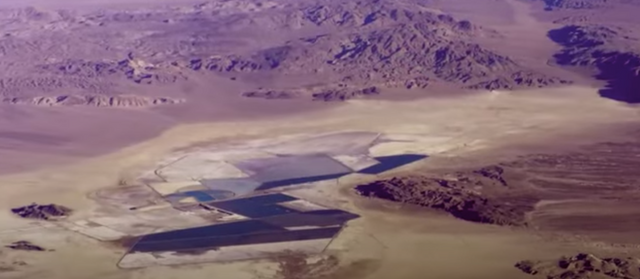
This from March of 2023,
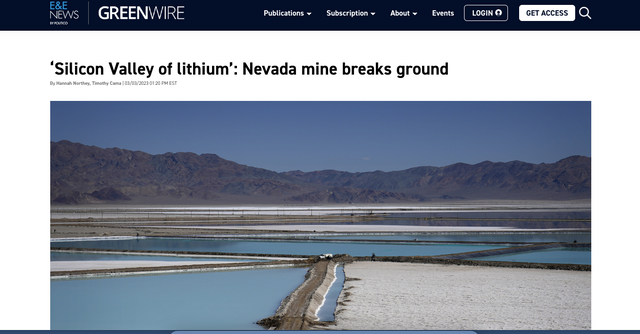
Developer Lithium Americas Corp. has said it plans to produce 80,000 metric tons annually of battery-quality lithium carbonate, an amount that Fox said will meet the nation’s current demand.
“Nevada is one of the USA’s most important mining states and is a canary in the coal mine for the U.S. appetite to sanction new critical mineral mines that are key to future industrial growth,” said Simon Moores, founder and CEO of the U.K. mining data firm Benchmark Mineral Intelligence Ltd.
“What happens in Nevada and its lithium wealth will resonate through the U.S. for key critical minerals such as graphite, nickel, cobalt, manganese and rare earths,” he added.
See more here,
https://www.eenews.net/articles/silicon-valley-of-lithium-nevada-mine-breaks-ground/
#Fusion, #FusionEnergy, #Aremageddon, #LawrenceLivermoreNationalLaboratory, #InertialFusionEnergy, #LLNL, #SandiaNationalLaboratory, #SNL, #LosAlamosNationalLaboratorty, #LANL, #WaimeaLab, #KauaiHawaiiLab, #NationalIgnitionFacility, #NIF, #SolarFlares, #Sunspots, #SunspotNM, #CancerTherapy, #CancerBreakthrough, #Lithium
Sources and Connecting Articles
https://st.llnl.gov/research/people/tammy-ma
Does it appear there are always two sides?
#GoodVsEvil, #FightTheGoodFight, #DarkToLight
One attempting to help humanity through it's research and another trying to harm?
Were you not told~ Ephesians 6:12
King James Version
12 For we wrestle not against flesh and blood, but against principalities, against powers, against the rulers of the darkness of this world, against spiritual wickedness in high places
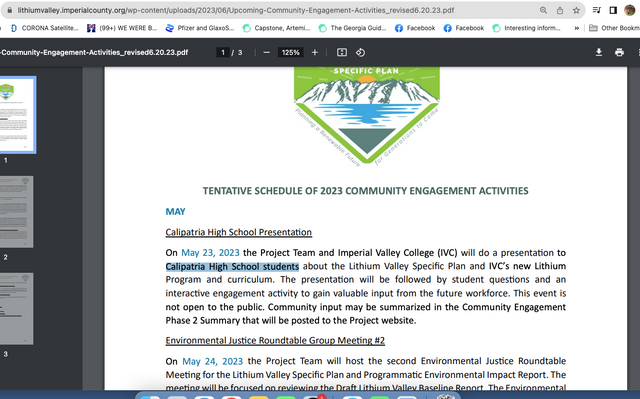
https://steemit.com/souljourney/@artistiquejewels/soul-journey-coming-back-in-when-the-5th-month-of-2023-hits-how-about-those-solar-flares-and-the-amount-of-light-they-are
https://steemit.com/abduction/@artistiquejewels/the-toddler-found-dead-in-amalia-new-mexico-in-tunnel-with-disabilities-and-11-undernourished-children-almost-a-month-before-the
#Sunspot, #SunspotNewMexico
https://steemit.com/abduction/@artistiquejewels/the-toddler-found-dead-in-amalia-new-mexico-in-tunnel-with-disabilities-and-11-undernourished-children-almost-a-month-before-the
https://steemit.com/epstein/@artistiquejewels/knockin-on-heaven-s-door-who-all-has-been-knocking-young-guns-billy-the-kid-jfk-murder-most-foul-bob-dylan-halyna-hutchins
https://steemit.com/timetravel/@artistiquejewels/baron-trump-s-marvellous-underground-journey-and-the-portal-seen-from-a-military-academy-commander-and-chief-trump-attended-who
Interesting?
UFO Hearing Live | Former USA Officials Claim Government Holds UFOs | US Congress UFO Disclosure
How about~
https://onlinelibrary.wiley.com/doi/abs/10.1002/%28SICI%291099-1743%28199703%2914%3A2%3C113%3A%3AAID-SRES154%3E3.0.CO%3B2-2
Newly-released government file reveals bizarre link between JFK and UFOs
By Talker News Jul 21, 2023 Updated Jul 21, 2023
https://www.kulr8.com/news/national/newly-released-government-file-reveals-bizarre-link-between-jfk-and-ufos/article_7b51d214-a14f-5aa6-b3ba-88c51eb03c78.html
https://www.popularmechanics.com/military/aviation/a44575754/new-cia-documents-jfk-assassination-ufos/
And what I had put in one of my Reveal vids years ago, was removed from YT and deprioritized on many other platforms as the controllers did not want this info released then~
IT'S BEEN A LONG ROAD! THE MONTAUK CONNECTION! HAVE YOU SEEN THE SCRIPT?
https://www.bitchute.com/video/LCKnqgVFMJ47/
#JFK, #UFO, #UAP, #UAF, #TestingTheNarrative